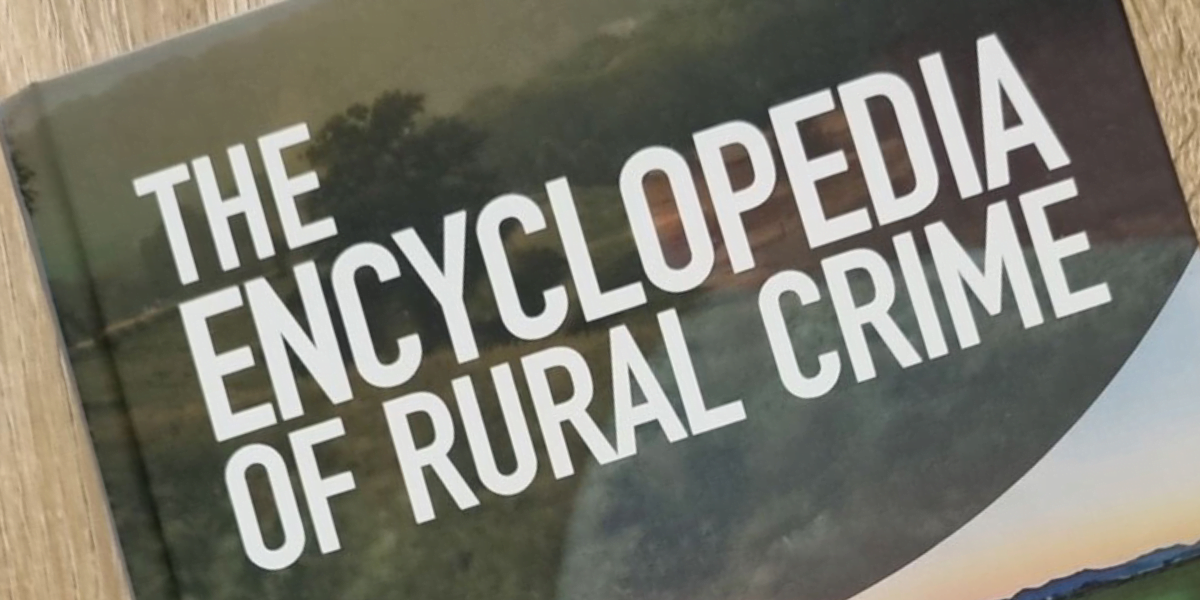A new book from the Centre for Rural Criminology at the University of New England (UNE) aims to improve the prevention and response to rural crimes.
Dr Alistair Harkness, Senior Lecturer of Criminology at UNE, was inspired to produce The Encyclopedia of Rural Criminology following a criminology conference in Germany in 2016. During the event he was given the opportunity to recommend ‘Rural Criminology’ as a new entrant into the Dictionary of Criminology. However, it was not added to the next edition.
The encyclopedia was published late last year and contains eighty-nine entries written by specialists from around the world. The variety of entries demonstrates the unique nature of crime and justice within rural locations.
Compared to crimes in urban areas, rural crimes often happen on isolated properties, far from the eyes of neighbours and friendly strangers.
“There are specific crimes that occur in rural areas that don’t occur in urban areas, such as cattle theft, illegal shooting, or stealing tractors,” Dr Harkness said.
“An older person living with an abusive adult child may not have a phone or a social network, and they’re stuck with their next-door neighbour two kilometres away.”
Like urban crime, the psychological, social, environmental, or financial state of an individual or group are common factors that lead to criminal behaviour. Although, in contrast to urban areas, the access to justice for rural residents has been unsatisfactory according to Dr Harkness.
“One of the key aspects of the book is access to justice.”
“For instance, the length of time it takes the police to attend, or a county court judge to get to a rural location is much longer than you would expect in Sydney, Brisbane, or Melbourne,” he said.
Despite that 28 per cent of Australians live in rural and remote areas, Dr Harkness revealed that only within the last ten years have they begun to receive adequate attention. One of the reasons offered for the delayed attention was inaccurate crime statistics.
“When governments decide where they are going to allocate resources, they look at the crime statistics, of which, are concentrated in urban areas.”
“We know crime is occurring in rural places too, but it is not being reported.”
A NSW Farm Crime Survey conducted by UNE in 2020 indicated that 90 per cent of farmers have been victims two or more times to farm crime. Dr Harkness explains this is a common response of victimised farmers.
“It’s notoriously difficult to get farmers to report. They say, ‘What are the police going to do, there’s no evidence’.”
The Encyclopedia of Rural Criminology highlights crime reporting as an important crime prevention strategy. Dr Harkness specified the effectiveness of CCTV cameras for rural properties, especially those that possess valuable stock and machinery.
“One of the things that is actively encouraged to do, because they are much cheaper and accessible now, is to install motion activated CCTV at entry and exit points. Then there’ll evidence that the police can use to conduct an investigation and bring the offender to court.”
There has been an attempt to reconcile the distrust that is felt toward the criminal justice system in rural areas. NSW Police formed a rural crime prevention team which includes investigators in Inverell, Moree, and Tamworth. Dr Harkness said that their role is not only to investigate, but also to educate.
“NSW has its own dedicated rural crime investigators with 65 dotted around the state.”
“Most of their time is not spent investigating, but rather educating at field days, machinery shows, stock yards, and online events.”
Dr Harkness considers the Encyclopedia for Rural Criminology as a useful resource to people living in rural areas and law enforcement.
“The book offers an insight into an array of issues, from farm theft to romance fraud, that can bring attention to what is happening and what responses might be possible.”
For anyone interested in purchasing the book, visit:
https://bristoluniversitypress.co.uk/the-encyclopedia-of-rural-crime


